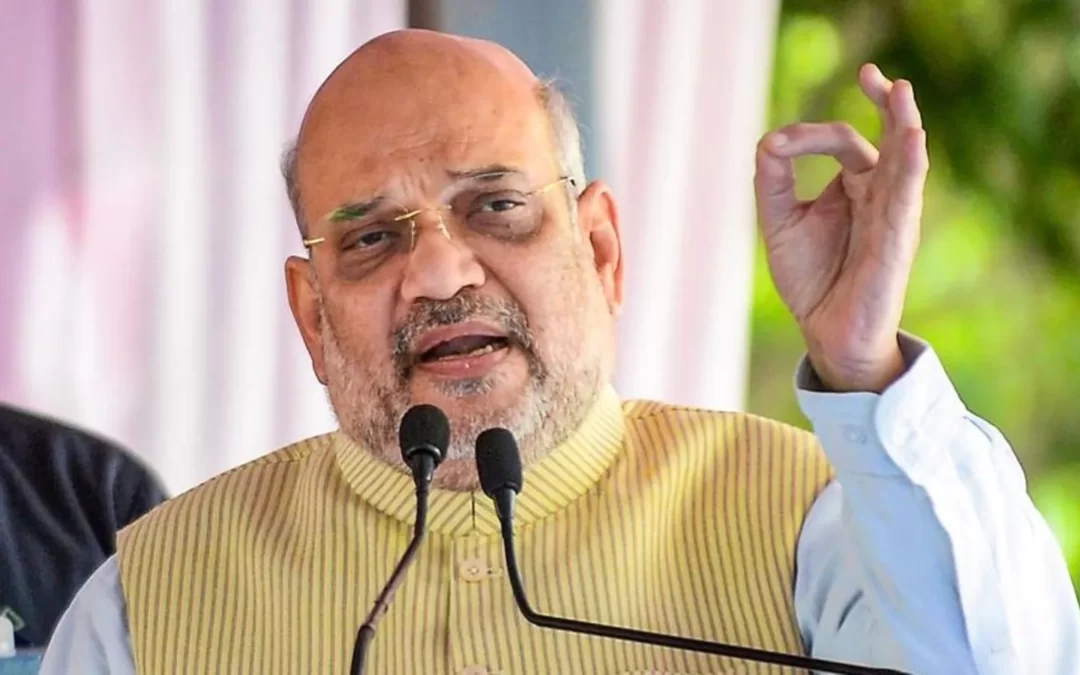Amit Shah, Union Home Minister
“As a result of the efforts of the government in the field of disaster management, there has been a 98 per cent reduction in the damage caused by cyclones and a significant reduction in heat wave casualties. The Government is formulating strategies to deal with calamities like landslide and calamities” Amit Shah, Union Home Minister
New Delhi: Union Home Minister Amit Shah on Tuesday said the Narendra Modi government’s approach and strategy to handle any disaster since 2014 is rescue-centric rather than relief-centric, thus reducing casualties and damage significantly.
Chairing a meeting of the Parliamentary Consultative Committee for the Ministry of Home Affairs (MHA) on ‘Disaster Management and Capacity Building’ here, he said many major policy-related and institutional decisions have been taken in the field of disaster management in the past 10 years.
The disaster-response policy of the Modi government is based on the four pillars of capacity building, speed, efficiency, and accuracy, Shah said.
This has resulted in significant prevention during disasters, from the 1999 super cyclone in Odisha that killed 10,000 people to the 2023 Biparjoy in Gujarat and 2024 Dana in Odisha with zero casualties, he said.
Before 2014, there was a relief-centric approach towards disaster management, which was changed to a rescue-centric approach by the Modi government, he said.
The home minister said that as a result of the efforts of the Modi government in the field of disaster management, there has been a 98 per cent reduction in the damage caused by cyclones and a significant reduction in heat wave casualties.
He mentioned the recent cloudburst and landslide incidents in several states, and said a strategy is being formulated to deal with such calamities.
Shah said the Modi government has adopted a multi-dimensional approach in the field of disaster management along with financial, institutional, and structural strengthening.
The focus of the Modi government is to save people from the losses caused by disasters, he added.
He also said that based on PM Modi’s 10-point agenda, the Disaster Management (Amendment) Bill was brought in 2024, which has been worked upon with transparency, responsibility, efficiency and synergy.
The home minister emphasised the need to spread awareness about disaster prevention at district and gram panchayat levels.
He said that NDMA(National Disaster Management Authority) has done important work in the use of technology and in policy making, while NDRF(National Disaster Response Force) has worked well to implement it at the ground level.
Under the National Cyclone Risk Mitigation Project (NCRMP) multipurpose cyclone shelters were constructed and 92995 community volunteer and government officials were also trained in cyclone mitigation, besides establishing Early Warning Systems in five Coastal States. He added that the infrastructure created under the project have proved very useful in saving lives during various cyclones.
Rs 66,000 crore was given to SDRF and NDRF between 2004 and 2014, which has been increased almost three times to Rs 2 lakh crore in the 10 years from 2014 to 2024, Shah said.
He also pointed out that Rs 1,28,122 crore has been allocated for SDRF and Rs 54,770 crore for NDRF for the period from 2021-22 to 2025-26.
Shah said the Central government has also allocated Rs 13,693 crore for the National Disaster Mitigation Fund and Rs 32,031 crore for the State Disaster Mitigation Fund for the period from 2021-22 to 2025-26.
India has made significant progress in early warning dissemination. India Meteorology Department (IMD) and Central Water Commission (CWC) now give accurate forecasts for floods and cyclones 7 days in advance. For last mile connectivity to disseminate alert to people, the Union Government has implemented a ‘Common Alerting Protocol’ based on Integrated Alert System (CAP) across the country through SMS, Coastal Siren etc.
The Home Minister emphasized on maximum publicity of ‘SACHET App’ which gives early warning of disasters.
Shah said that with the implementation of Aapda Mitra Scheme and Yuva Aapda Mitra Scheme, Government has been paying due attention to develop capacity at community level and ensuring community participation during disasters. Under the Aapda Mitra scheme one lakh community volunteers have been trained in 350 disaster prone districts to provide immediate response during different disasters.
Government has also launched a scheme for expansion and modernization of fire services in the States with an outlay of Rs 5000 crore under which States are provided central assistance for setting up of new fire stations, strengthening of State Training Centers and capacity building etc.

